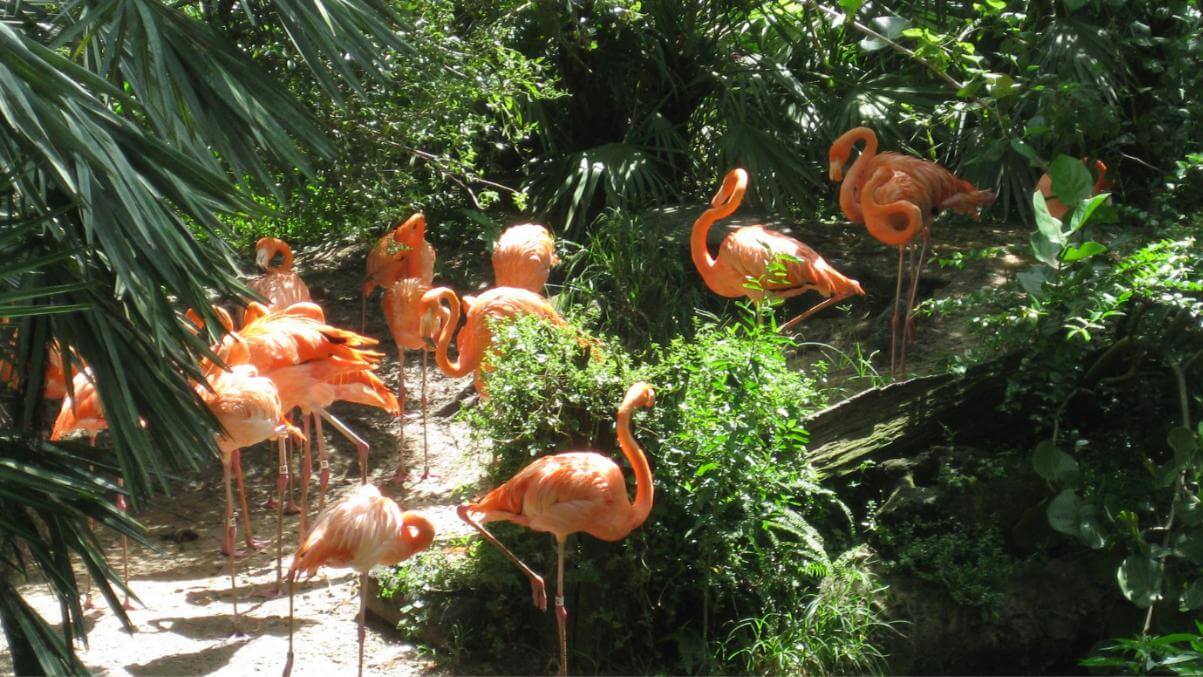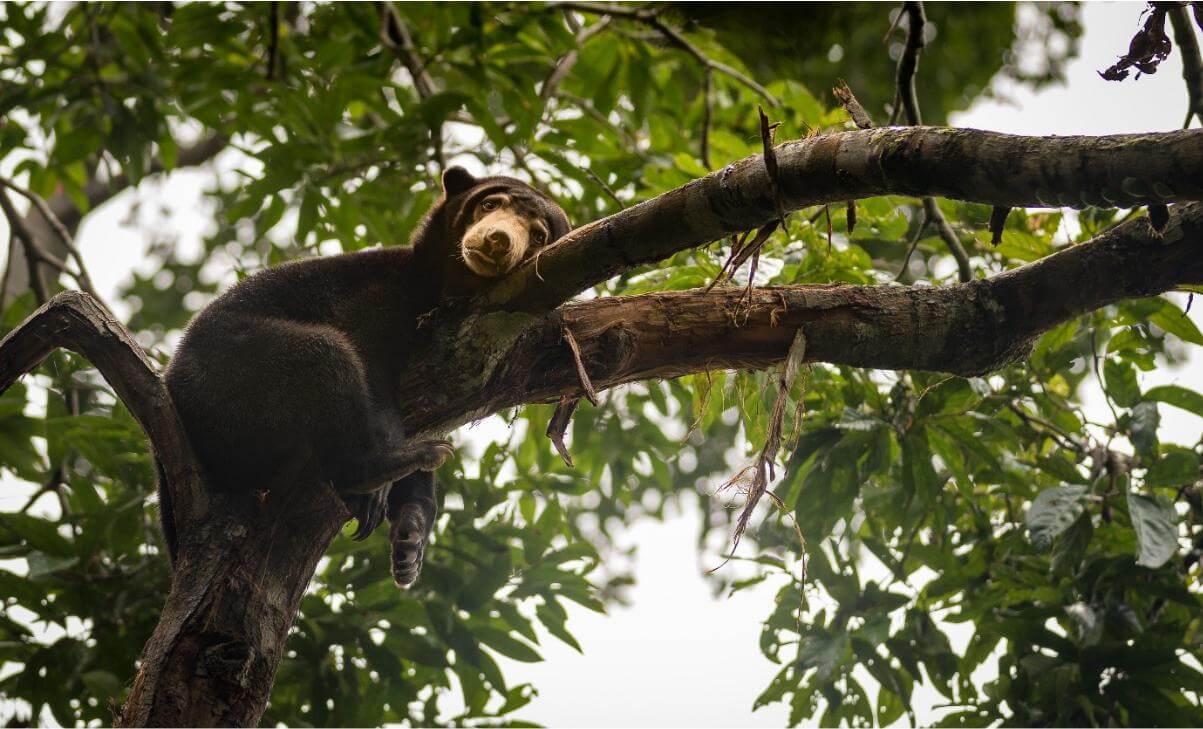Sanctuary means a place of safety and a wildlife sanctuary is often a protected area of land set aside to keep animals safe whilst in their natural environment. Animals may enter a sanctuary in ‘retirement’ after appearing in a circus or following abuse and neglect. Captive animals raised by humans will have difficulty surviving in the wild so living out their lives in a sanctuary becomes the best option for them.
Why is it important to protect and conserve animals?
All animals, however big or small, play a vital role in their ecosystems. Losing just one species can impact all the others (including us). Many animals are at risk of extinction due to a combination of habitat loss, climate change and persecution by humans.
We are fortunate enough to live on a uniquely beautiful planet, abundant with life of all kinds. Protection of all wildlife is a responsibility we need to take seriously. By working to conserve wildlife, we’re making sure that future generations can enjoy and benefit from the amazing species that we are lucky enough to share a planet with.
What are some methods to conserve wildlife?
Many countries have chosen to protect wildlife through legislation. India’s Wildlife Protection Act (1972) is one example. The Act focuses on eradicating the illegal trade in wildlife and also regulates India’s national parks, sanctuaries and zoos.

Other countries employ other strategies to conserve wildlife, for example, Namibia was the first African country to place environmental protection in to the constitution and have been working to restore their large animal populations.
Wildlife tourism can be a blessing and a curse. Botswana deliberately keeps visitor numbers at a low level in order to manage the environmental impact that wilderness safaris can have. Land protection is vital for wildlife protection. Tanzania has designated one third of its land as protected and hosts an impressive fourteen national parks.
Conservation vs Preservation
Conservation is about saving what we have and using only what we need. Preservation, on the other hand, is about keeping our ecosystems safe and free from human interference.
Both terms are used to describe protection of wildlife and our natural world, but the difference is found in how that protection is carried out. The inception of the National Park Service (NPS) in the USA is a good example of the debate around conservation vs preservation. In this case, the concept of conservation won out and today the NPS covers 84 million acres across the USA.
Whether we argue for conservation or preservation, the goal is to protect all of earth’s precious species.

What are some of the best wildlife sanctuaries around the world?
Sometimes sanctuaries can be little more than animal attractions designed to make money from paying viewers. In these places, the welfare and protection of the wildlife is not the primary concern. At their heart, sanctuaries should be primarily concerned with the welfare of the species that they protect.
Fortunately, there are lots of examples of sanctuaries providing excellent space and care for animals across the globe. We have gathered together a few examples for you.
Some sanctuaries work to rehabilitate and return animals to the wild, for example, the bonobo sanctuary, Lola Ya Bonobo, in the Democratic Republic of Congo (DRC). Lola Ya Bonobo has successfully reintroduced young bonobos into the wild after a period of rehabilitation in the sanctuary. Their work is directly helping to conserve this amazing species.
Save the Chimps in Florida provides sanctuary to over 240 chimpanzees that have been rescued from the pet trade, research laboratories and the entertainment industry. Save the Chimps ensure that the chimpanzee at the sanctuary have lots of space. They have 150 acres to roam and live across 12 islands.
Lone Pine Koala Sanctuary opened in 1927 at a time when koalas were being culled for the fur trade. The sanctuary operates as a safe refuge for sick, injured, and orphaned koalas. It is now home to over 70 species of Australian native wildlife.
Wolf Haven International works to conserve and protect wolves and their habitat. Many wolves in the sanctuary were previously either privately owned or came from zoos before being relocated. Wolf Haven participates in Species Survival Plan (SSP) programmes for the red wolf and the Mexican gray wolf.
How can I work to help conserve animals?
Learning about the threats currently facing our wildlife prompts many people to try and help. Lots of people would like to work directly in the care of our species. Zoos and safari parks are one way to help conserve and protect species for future generations. They also offer an excellent opportunity to educate the general public about the amazing creatures that we share a planet with.
Working in a zoo is a popular career choice and finding a job can be competitive. You will need to be knowledgeable about animals and passionate about their care. Our Level 3 Diploma in Zookeeping qualification has been designed in consultation with employers to boost your employment prospects.

During our zookeeper qualification, you will learn how to prioritise animal welfare whilst still making room for the public to enjoy the zoo experience. Zoos accommodate a wide range of animals including endangered species. The Level 3 Diploma in Zookeeping will give you a thorough knowledge of how to care for these stunning animals in captivity and, importantly, how to conserve them for the future.
During the course you will learn about:
- Development of Zoos
- Animal Welfare and Ethics Conservation in Zoos
- Zoo Design
- Disease and Prevention
- Management of Animals in Zoos Enrichment and Training
- Zoos and the Media
- Legislation and Zoological Collections
Our Zookeeping course also includes practical training at Blackpool Zoo. “Blackpool Zoo is a 32-acre zoo located in Blackpool, Lancashire, England – this well regarded zoo provides excellent, well established practical training and is home to over 1,350 animals from all over the world including lions, tigers, elephants, gorillas, zebras, flamingos, penguins, ostriches, owls, tortoises and more.”
All sanctuaries hope that one day they won’t be necessary because the preservation of life on our planet is assured. Until that day comes, we all have a part to play in the protection of all life on our planet.
Discover more animal careers and training opportunities by visiting our wildlife career advice pages. Alternatively, you can contact us directly to speak to a student career advisor by calling 0120 200 640.
Also, if you adore animals, you can keep track of all upcoming animal awareness days and events with our FREE calendar! Download it here.

















